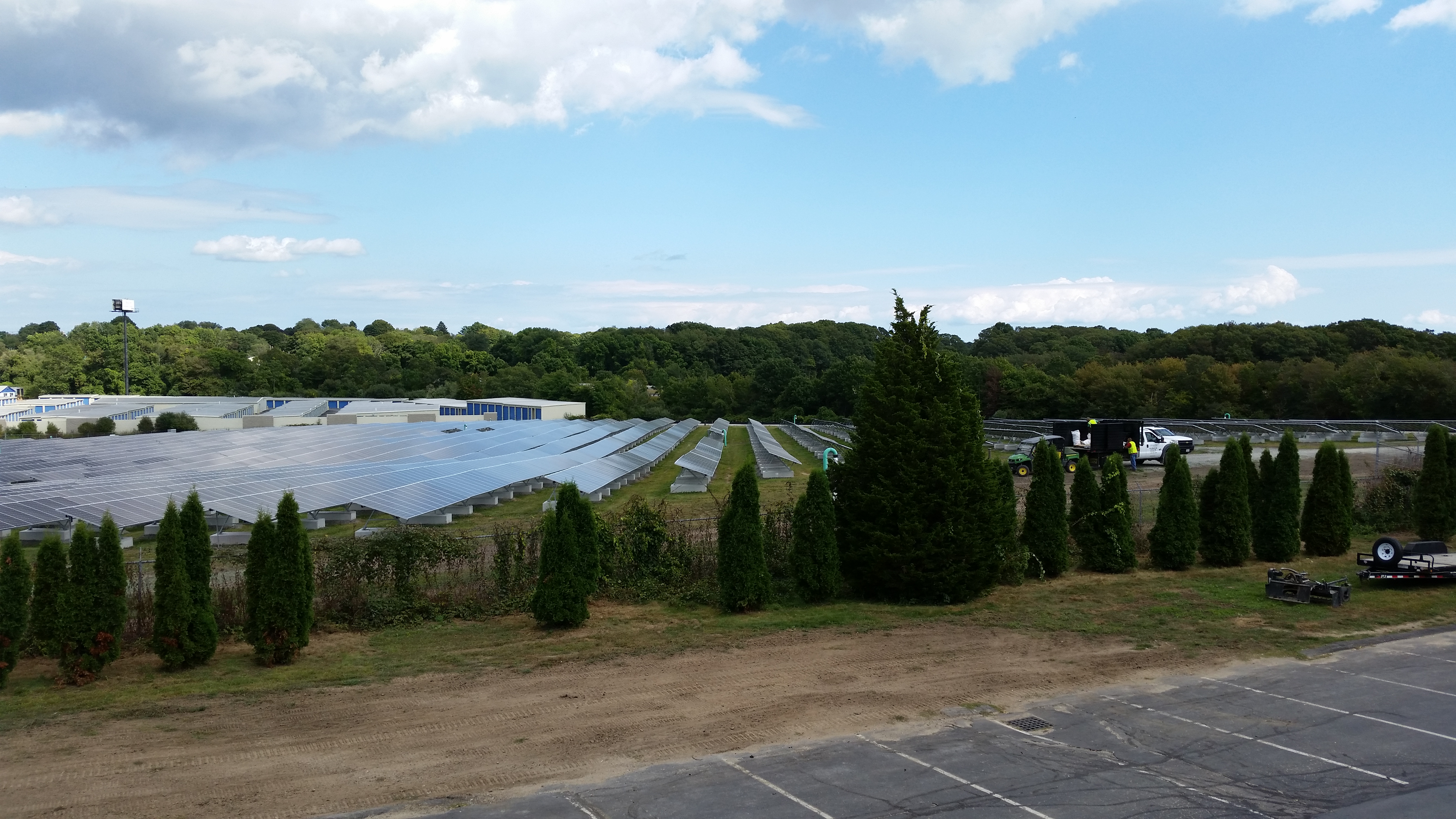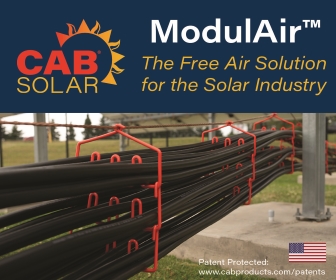Solar on Landfills
The next frontier for sustainability
 Imagine standing in a field. The sun is bright, and as far as the eye can see in every direction, there are hundreds, maybe even thousands of black, glossy panels standing upright in parallel rows, taking in the sun’s rays. The subtle beauty of a solar field can be a breathtaking reminder of the clean energy being produced and our commitments to environmental sustainability.
Imagine standing in a field. The sun is bright, and as far as the eye can see in every direction, there are hundreds, maybe even thousands of black, glossy panels standing upright in parallel rows, taking in the sun’s rays. The subtle beauty of a solar field can be a breathtaking reminder of the clean energy being produced and our commitments to environmental sustainability.
Now, imagine below the grass lie mounds upon mounds of garbage. That’s right, the solar field is on top of a landfill. Does the scene still seem as glorious? It should.
Though improvements in energy efficiency have made a significant impact, overall energy demand has continued to rise, and the need for new and innovative ways to generate power is higher than ever. At the same time, questions arise of where to install new generation facilities in densely populated areas, and what can be done with brownfields and landfills where residential and commercial construction is impractical?
In response to these growing needs, turning brownfields to brightfields by installing solar panels is a practical solution gaining popularity across North America.
According to the US EPA’s Repowering America’s Land Initiative, US solar installations on landfills and brownfields have increased from producing no MWs in 2006 to 173.2MW in 2015, and many more of these facilities are being considered every day as a potential solution to our energy challenges. According to the EPA’s Repowering America website, there are currently at least 200MW of solar on landfill projects in the queue, although actual figures may be even higher.
Site-specific questions to assess
When identifying a brownfield or landfill as a potential solar site, there are a number of key qualities developers should look for. First and foremost, the best candidates for such a project are closed, or capped, locations. From a logistical perspective, developers don’t want to deal with additional remediation or closure efforts to the existing landfill site, as these will prolong the entire process and necessitate a greater amount of work, which can become costly.
Evaluating the topography of the proposed site is another key factor. Details such as the intensity of slopes on the landfill and level of undulation require a fair degree of consideration. Experts agree flatter land is always preferable, and makes these sites more attractive, allowing developers to fit a maximum quantity of solar panels in the area. In addition, flatter surfaces reduce the amount of shade between panels and between rows, optimizing energy production.
The age of the landfill is also a significant criterion, since settling can be a concern over time. If a site was filled primarily with construction debris and waste which doesn’t decompose, age is not so much of a factor, as long as the underlying soil can support the weight of the solar structures on top. But in the case of municipal solid waste landfills, the grounds may still produce methane gas or other types of waste, which could be potentially harmful to anyone working on or surveying the surface of the installation. Newly closed landfills still have years before they settle, giving the waste enough time to fully decompose. While there’s no universal standard, the rule of thumb in these cases, is the best candidates are those that have been closed for 20 years or more.
At the outset of every such project, it is crucial to develop a robust engineering analysis to evaluate any potential issues, such as the effects of stormwater on the land and other geotechnical considerations.
Permitting challenges
Developing such a facility is not without its challenges, and there are a number of permitting and technical requirements which must be met prior to installation. No matter where a project is planned, permitting is not an easy task, and it is a best practice to have all documentation in place well before construction, while adhering to all record-keeping guidelines.
Ease of permitting can fluctuate depending on the region of the proposed installation. In regions with higher population densities, such as New England and the West Coast, the lack of open land for new projects adds greater pressure to repurpose existing sites. There’s also greater potential benefit, as many municipal utilities look to supplement generation rather than import it from hundreds or thousands of miles away. The review processes in these regions are often among the most stringent, and dual pressures and opportunities often lead to "first-of-their-kind” projects repurposing limited land resources. In these cases, significant documentation is typically required, and consultants with deep local relationships are mission critical to keep projects moving forward and on schedule.
However, even in areas where there are relatively short permitting forms for developers to complete, the process still entails numerous discussions and meetings with environmental regulators. It's never just as simple as a developer filling out an application, dropping it off, and moving forward without additional boundaries. Logistically, developers must leverage relationships and technical expertise to ensure the project comes to fruition in a timely and cost-effective way.
The big brightfield picture
Hybrid projects such as these are extremely important to maintaining an adequate energy generation output, and they allow developers to reuse land that would have otherwise gone to waste. Repurposing these sites contributes to environmental sustainability efforts, and discourages the wasting of resources by offering solutions to maximize the value of a given location. In addition, these conversion sites create jobs and provide educational opportunities for all those involved. Most importantly, however, these sites generate significant financial savings, and provide clean energy to local communities.
Rob Jackson, PE, is the national market director for solar power, TRC Companies, Inc.
TRC Companies, Inc. | www.trcsolutions.com
Volume: 2016 May/June









.png?r=2494)


